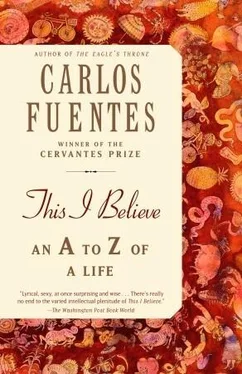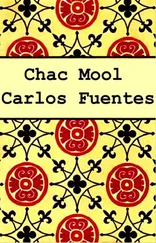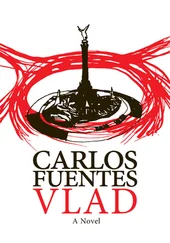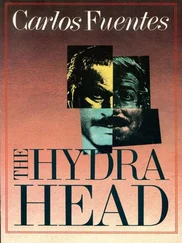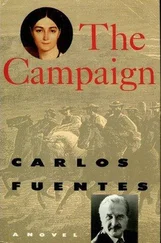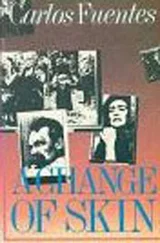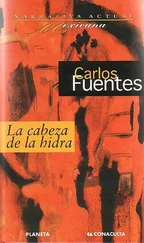The secular quality of a revolution is perhaps the greatest guarantee of its rigor. Russia was unable to abandon its Byzantine religious legacy with Communism and imposed it upon Western nations where the Caesaro-Papist tradition was completely alien: that is, all of Central Europe. The Chinese Revolution was never able to shake off the legitimist, bureaucratic severity of the old Middle Kingdom, nor could the Cuban Revolution evade, from the Left, the deathly trap of the Latin American Right: the cult of the number-one leader, the providential chief.
The Mexican Revolution is full of contradictions. It emerged as a democratic political movement — elective suffrage, no reelection — led by a good, naïve man, Francisco Madero. Quite possibly his greatest achievement was to motivate a country of illiterates with one book, La sucesión presidencial en 1910 ( The Presidential Succession in 1910 ). But once he took office, Madero made the mistake of leaving the pillars of dictatorship in place— the federal army, the privileges of the great landowners — and was forced to endure the affronts, obstreporousness, and even the betrayal of a press and a congress without any kind of democratic political experience. The assassination of Madero, carried out by General Victoriano Huerta and the ambassador of the United States, Henry Lane Wilson, was what precipitated the real Mexican Revolution: the social, economic revolution.
From the Mexican night the leaders of revolution emerge. They come from the great ranches and the towns, the middle class of the provinces and the indigenous mountainside, from the haciendas in flames and the cities under siege. And they represent two clear trends: that of the peasantry and that of the bourgeoisie. Emiliano Zapata, a man of silence and mystery, looks like a ghost who was granted the privilege of brief human incarnation so that he might demand Land and Liberty. Francisco Villa is a rusty copperhead who had been to Mongolia, Andalucía, and the Rif mountains in Morocco, and with the nomadic tribes of the American north until it finally settled squarely down upon the shoulders and beneath the gold-trimmed hat, stained with blood and dust, of a man from Chihuahua who “narrows his gaze against the assault of light, with vast reserves of intuition and ferocity and generosity” ( The Old Gringo ). Both Zapata and Villa represent the tumultuous will of justice, as old as the centuries yet, unlike those centuries, incomplete. The bourgeois faction is led by Venustiano Carranza, an old dictatorship-era senator disguised as himself: long white beard; eyes hidden behind violet lenses; tall, paternal, protective, distant, self-assured. Never sit where the sun can strike you directly in the face, for that is the place of either the blinded opponent or of the supporter who has learned his place. Never sit with your back to a door or a window, for that is where murderers enter. “The old king,” Fernando Benítez called him in an exceptional novel that tells how, despite everything, the old lion was assassinated by his impatient little pups, Álvaro Obregón, a young farmer from Huatabampo, and Plutarco Elías Calles, a young schoolteacher from Sonora. The eyes of Obregón smile — he is ingenious, witty, friendly. The eyes of Calles penetrate — he is a preying tiger, unsmiling.
In Mexico the bourgeois revolution led by Carranza, Obregón, and Calles defeats the peasant revolution of Zapata and Villa. But the 1917 constitution makes concessions to the peasant movement. The right to work and the division of land are elevated to a constitutional level, along with individual guarantees, which include the right to property. Society and its laws fashion themselves around the dead bodies left behind by the revolution: Saturn devours his own children until one extraordinary president, Lázaro Cárdenas, pulls together all the revolution’s causes— public education, infrastructure, communications, agrarian reform — and liberates the laborer from the landowner, offering him the chance to migrate toward the city to become cheap labor for the process of industrialization that, thanks to Cárdenas’s nationalization of oil, will have cheap fuel with which to operate.
All of this is accompanied by an implicit pact. The governments born of the revolution give the people education, work, and stability, but not democracy. As long as this pact remains unaltered, from 1938 to 1968, Mexico is the Latin American paradigm of stability. The army stays in its barracks and supports the president who, every six years, goes from being the tapado (“concealed one”) to the nuevo ungido (“newly anointed one”) whom the president in power has designated as his successor with his gran dedo (“great finger”). The pact is broken in 1968 when the young people educated in the schools of the revolution and raised on the ideals of justice and liberty demand those very two things on the streets and meet with death, on the Night of Tlatelolco, October 2, 1968. That was the night the institutional revolution in Mexico ended, and something that had never died asserted every last bit of its strength: the social movement of workers, country peasants, students, the middle class. . But it took three more decades for the country to reach its definitive moment of transition, which occurred when the opposition finally triumphed in a presidential election. It happened on July 2, 2000, and there was no blood, no fighting, and no doubt that day. We all won, I wrote. The sitting president, Ernesto Zedillo, because he ensured nothing less than the strict fulfillment of the law. The elected president, Vicente Fox, because his determined, contentious gamble brought the opposition into power. And the entire Mexican populace, because the social struggle had finally joined forces with the political struggle, and the Mexican Revolution — betrayed, slandered, corrupted, constructive, liberating, contradictory as it was — achieved what other revolutions of the Third World could not. Revolution, sometimes, means remaining loyal to the impossible.
And it is not just victory over injustice but victory over the inevitable, which is sometimes a far more grueling battle. Under Stalin injustice and inevitability came together in a kind of perverse joke: for him, all Communists were traitors with one exception — oddly enough, the person who held the power, Joseph Stalin. We need not repeat the names of all those who carried out the same macabre political practice. We do, however, always need to reject and reverse any and all totalitarian pretensions, no matter how magnificent they may be, whether poetic or political (Rimbaud: we must change life; Marx: we must change the world). And we must replace them with the revolution that makes things relative, pluralizes the world, and renounces the illusion of totality, so similar to the word totalitarian. The revolution of the twenty-first century is about valuing differences: ethnic, political, religious, sexual, cultural. .
And so, the word revolution appears with the luminous meaning that Maria Zambrano gave it: revolution is annunciation.
And then there are the other ladies, I don’t mean the ladies left over, the leftover ladies. The ladies of yesteryear whom François Villon evoked with a nostalgic beauty and precision that forever renounced the new encounter with the woman we love and who was: the ladies left behind, never the leftover ladies, who will forever remain, like restless ghosts, complicit in what once was and could have been. “Dites moi où, n’en quel pays / est Flora la belle romaine. . ?”
Eros first manifests itself in girls, in my case two classmates in Washington with whom I slowly came to discover who I was, in the marvelous penumbra they offered me: one of them had old-fashioned Mary Pickford ringlets while the other was a dauntless, freckled little thing, like Nancy or Mafalda in today’s terms. In those dimly lit apartments free of parents, they were the first women to reveal themselves to me, and to themselves as well. We were but nine years old, and they did it with a kind of shameless innocence. Why, then, had they felt obliged to reveal our delicious secrets? Nobody had caught us unawares, ever. Yet they had had to confess it, expose it and make themselves vulnerable — it was almost as if they had wanted to be punished. And the punishment was that I would never be able to see them again. In Santiago de Chile, however, at twelve years of age, I had the misfortune of falling in love with a neighbor, a girl with a neat fringe, wild eyes, and a father who was a high official in the Chilean air force. When he discovered us together, he not only ended our puppy-love affair but drove my family to move to another house. And then, at age fifteen in Buenos Aires, after refusing to attend the fascist schools of the Minister of Education Hugo Wast, I discovered that at eleven in the morning, the only people in our apartment building on the corner of Callao and Quintana were me and my upstairs neighbor, a beautiful actress with a long mane of hair and silvery eyes. And so my very first sexual strategy consisted of going upstairs to her apartment with my copy of the radio magazine Sintonía, ringing the lovely lady’s doorbell and asking, “Who will Eva Duarte be playing today in the series Celebrated Women of History, Joan of Arc or Madame Dubarry?” I still remember the half-open eyes of my illusory silver goddess when she answered, “Madame Dubarry. Less saintly but far more entertaining. Won’t you come in?”
Читать дальше
